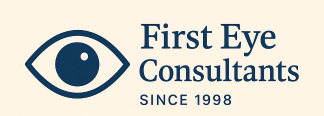Introduction
Cataract is a clouding of the natural lens of the eye, leading to gradual visual impairment. The visual experience in cataract typically changes over time as the opacity of the lens increases.
Early Stage:
- Blurred Vision: Vision becomes mildly blurred, like looking through a dirty or cloudy window.
- Glare and Light Sensitivity: Increased sensitivity to bright lights or sunlight. Night driving becomes difficult due to glare from headlights.
- Reduced Contrast Sensitivity: Difficulty distinguishing between shades, especially in low-light conditions.
- Color Fading: Colors appear duller or more yellowish.
Moderate Stage:
- Increasing Cloudiness: The blurriness worsens, and details become harder to see even in bright lighting.
- Double Vision (Monocular Diplopia): Seeing multiple images in one eye, especially when looking at lights or text.
- Frequent Prescription Changes: The person may need new eyeglasses more often, but vision improvement becomes limited.
- Halos Around Lights: Rings or halos may appear around light sources, especially at night.
Advanced Stage:
- Severe Blurred Vision: Vision becomes significantly reduced. Reading, recognizing faces, and performing daily tasks become very difficult.
- Darkening or Brownish Tint: The lens may take on a brown or amber color, causing further color distortion and dimness.
- Near-Blindness in Affected Eye: In mature or hypermature cataracts, the lens becomes completely opaque, leading to almost total loss of vision in that eye.
Progression Pattern:
Cataracts typically develop slowly over months to years. However, in cases such as:
- Diabetic cataracts or traumatic cataracts, the progression may be more rapid.
- Congenital cataracts may be present at birth and affect development of vision if not treated early.
Note on Reversibility:
Cataract-related vision loss is reversible with surgical removal of the cloudy lens and replacement with an intraocular lens (IOL). Surgery restores clear vision in the vast majority of cases.
